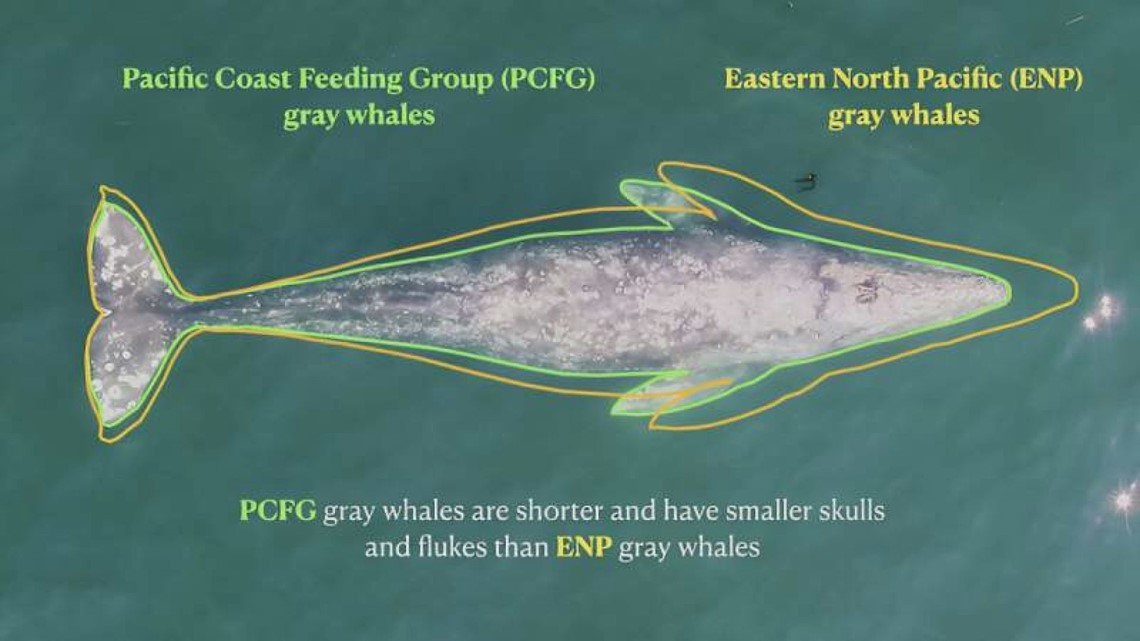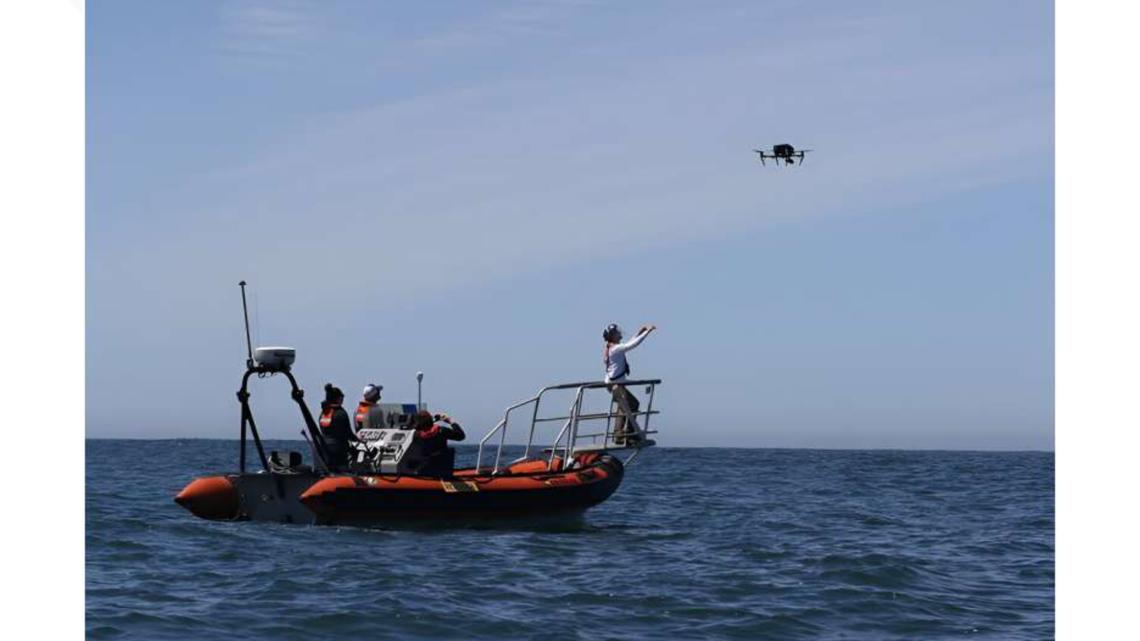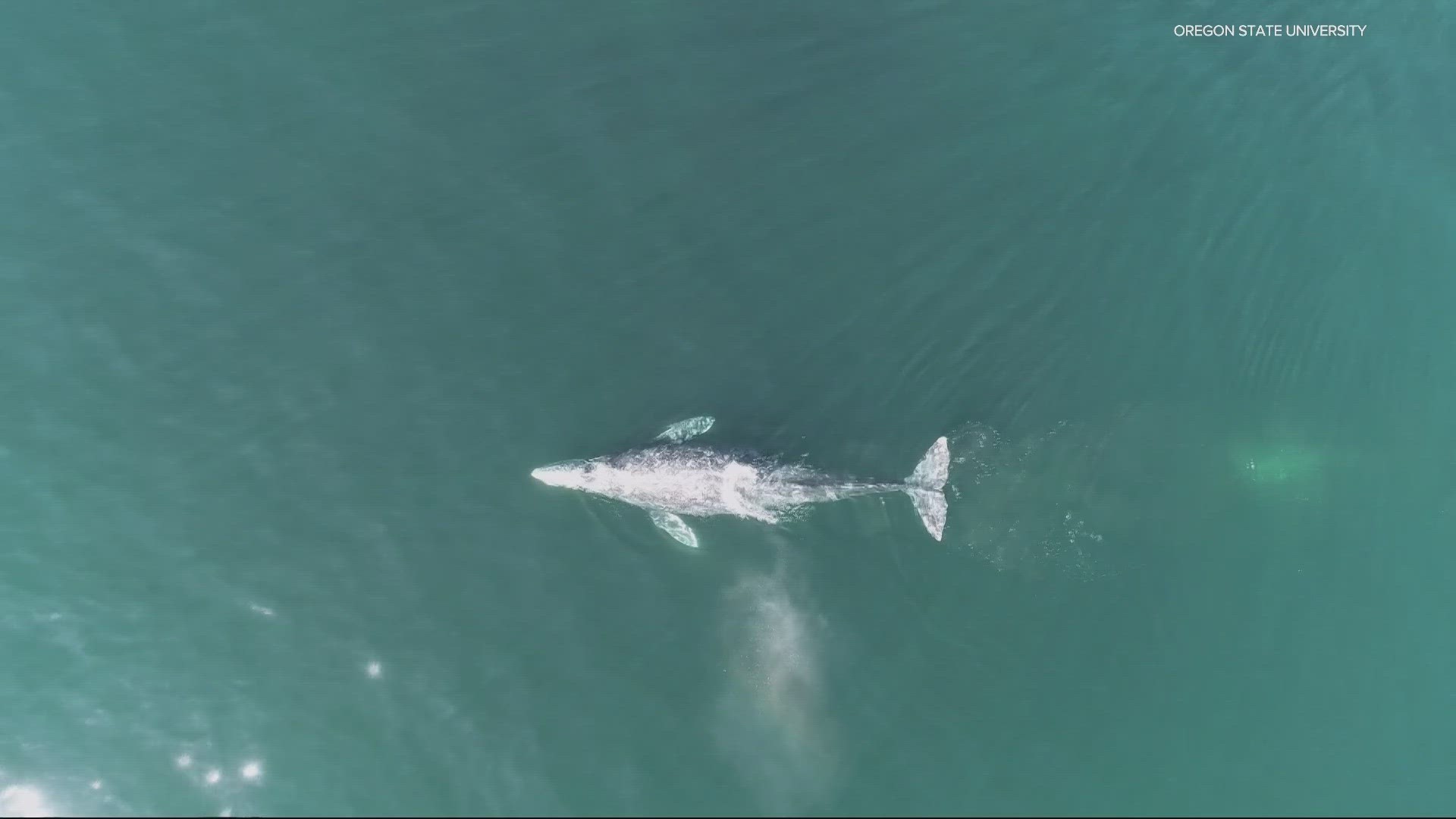NEWPORT, Ore. — Gray whales are a sight to see and we are fortunate to have them off our coast, feeding in the summer months.
Oregon State University scientists have been watching them much more closely than the rest of us. In recent years, they’ve been using non-invasive techniques like drones, to really get to know the 212 gray whales called the Pacific Coast Feeding Group.
The population is much smaller than the 16,000 or so that travel farther north to Alaska to feed, in the Eastern North Pacific.
The drone view also helped discover something: Oregon’s summer resident gray whales are smaller than their counterparts that travel farther north. The females about three feet shorter, the males a foot and half. Their skulls and flukes are smaller too — so why?


“One thought is that this could be a warning sign that these group of whales is unhealthy, not getting enough resources so they're shrinking in size,” said K.C. Bierlich, a postdoctoral scholar working with a research team led by associate professor Leigh Torres out of OSU's Hatfield Marine Science Center in Newport. Bierlich, Torres and others are co-authors of the study just published in the journal Biology Letters.
But the other leading idea is that it is all about adaptation.
“The habitat here off the Oregon coast is much different than the habitat of the gray whales feeding in Alaska or in the arctic would experience. It's much more shallow, rocky, kelp forest, so you could see where a different morphology: smaller size, shorter skulls (and) flukes might actually help them thrive and survive in this habitat,” said Bierlich.
The marine biologist says getting to know our small group of gray whales is a thrill, and the new methods makes it possible.
“It really highlights the importance of the science and the new technologies we're bringing to be able to observe animals in this way. We can fly the drone over them it's a non-invasive method and we can see the same individuals over years.”


Bierlich added that they will carry on more studies to better understand our summer resident whales and their needs.
“I think continuing on that and coming up with strategies to manage this population differently so they can thrive and be a healthy population off our Oregon coast here… that's the goal.”

